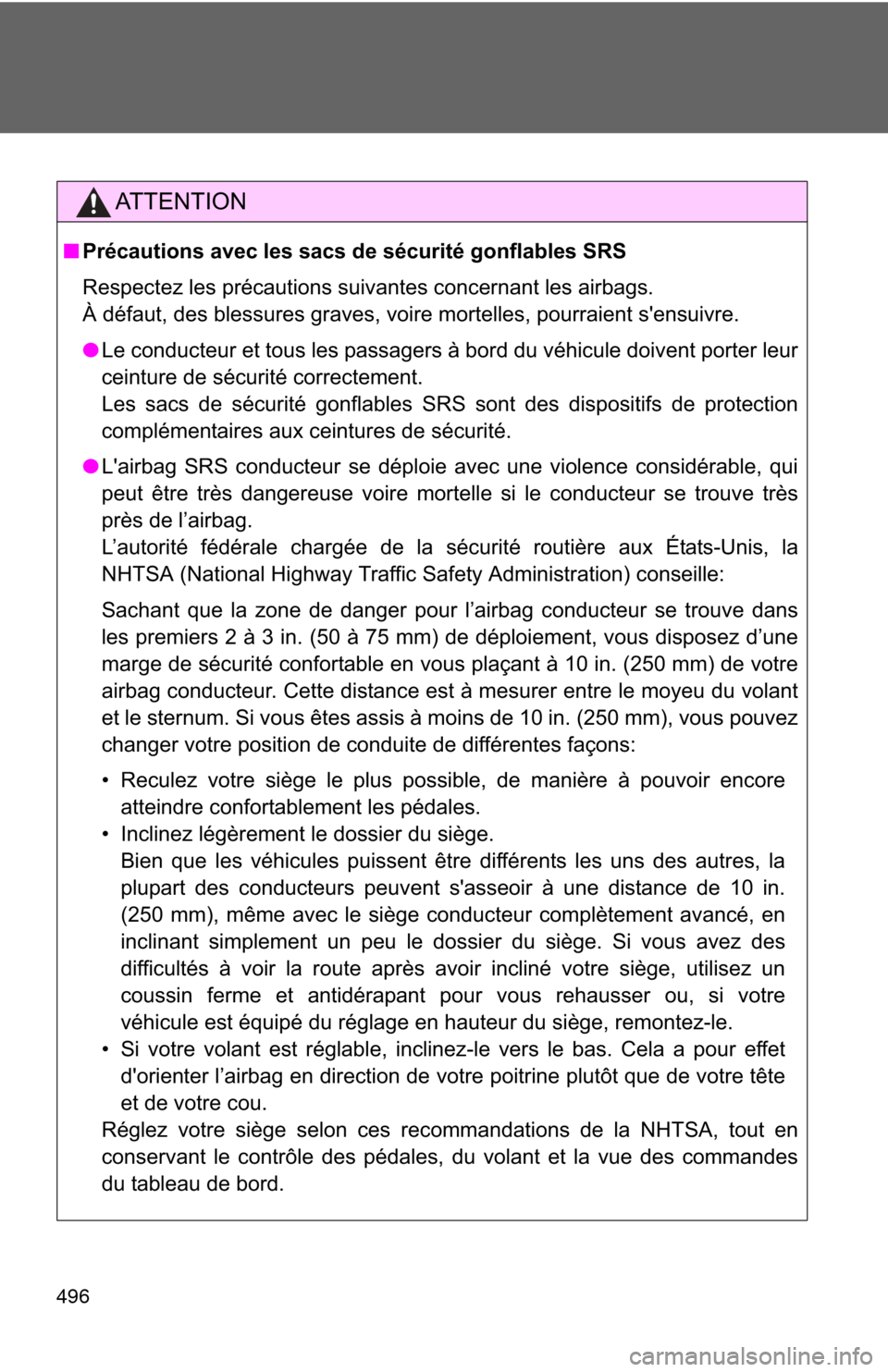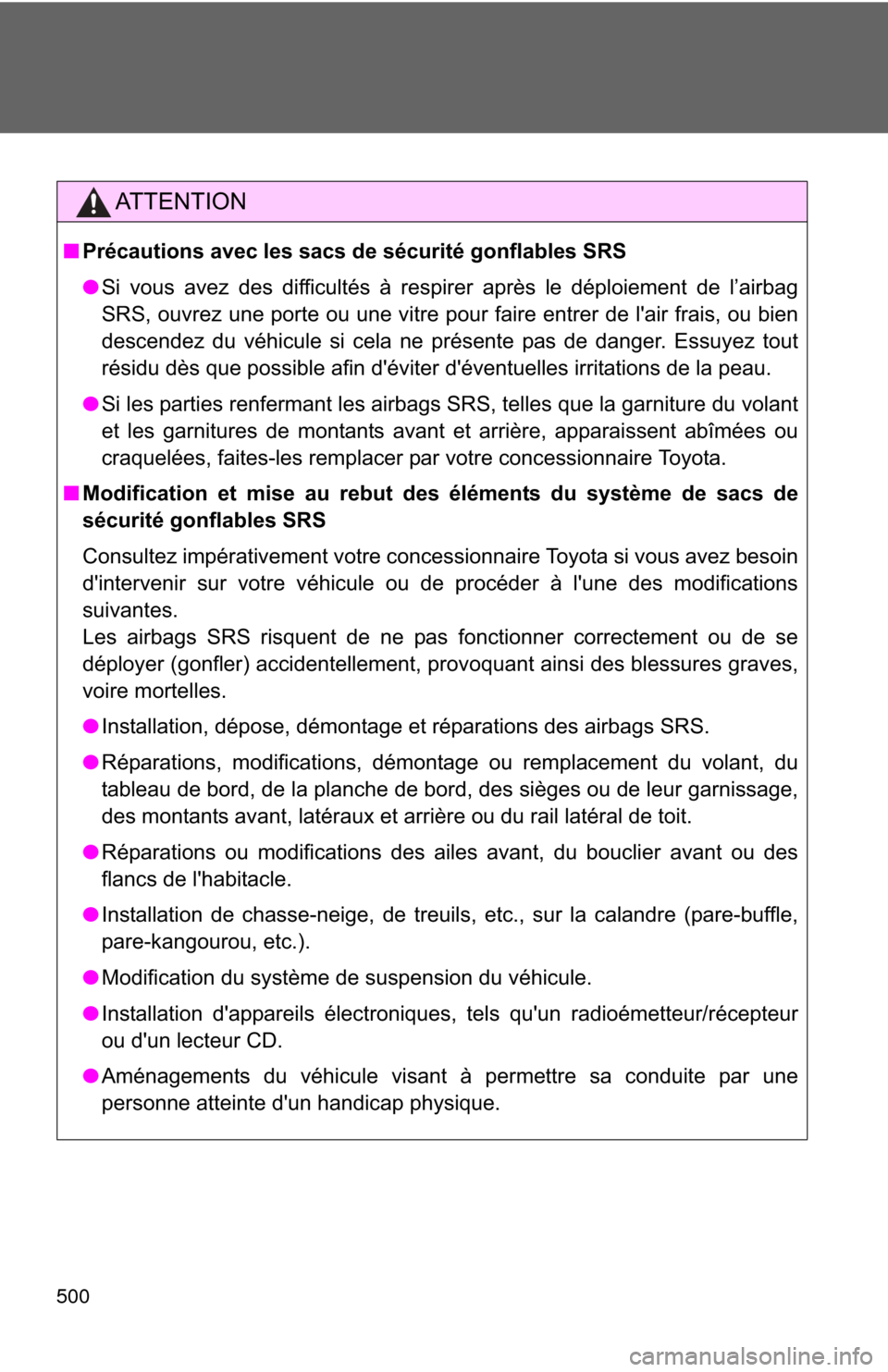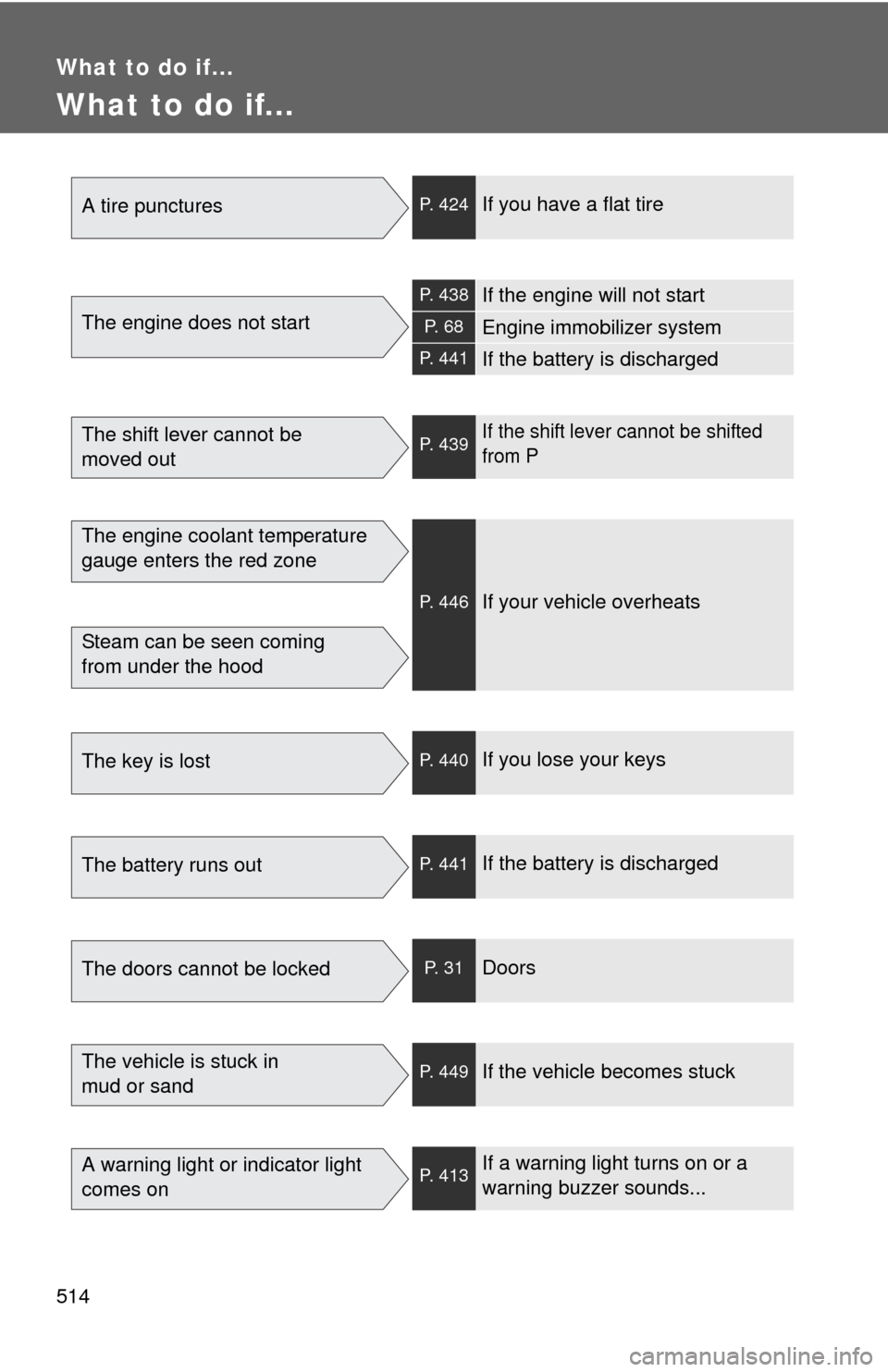ESP TOYOTA MATRIX 2012 E140 / 2.G Owner's Guide
[x] Cancel search | Manufacturer: TOYOTA, Model Year: 2012, Model line: MATRIX, Model: TOYOTA MATRIX 2012 E140 / 2.GPages: 516, PDF Size: 7.02 MB
Page 336 of 516

336
4-2. Maintenance
Maintenance requirements
■Repair and replacement
It is recommended that genuine Toyota parts be used for repair to ensure
performance of each system. If non-Toyota parts are used in replacement or
if a repair shop other than a Toyota dealer performs repairs, confirm the war-
ranty coverage.
To ensure safe and economical driv ing, day-to-day care and regular
maintenance is essential. It is the owner’s responsibility to perform
regular checks. Toyota recommen ds the following maintenance.
■General maintenance
Should be performed on a daily basis. This can be done by your-
self or by a Toyota dealer.
■ Scheduled maintenance
Should be performed at specified intervals according to the
maintenance schedule.
For details about maintenance items and schedules, refer to the
“Scheduled Maintenance Guide” or “Owner’s Manual Supplement”.
■Do-it-yourself maintenance
You can perform some maintenance procedures yourself.
Please be aware that do-it-yourself maintenance may affect war-
ranty coverage.
The use of Toyota Repair Manuals is recommended.
For details about warranty coverage, see the separate “Owner’s War-
ranty Information Booklet” or “Owner’s Manual Supplement”.
Page 371 of 516

371
4-3. Do-it-yourself maintenance
4
Maintenance and care
■Tire pressure warning system certification
FCC ID: PAXPMV107J
FCC ID: HYQ13BCX
For vehicles sold in the U.S.A.
This device complies with Part 15 of the FCC Rules. Operation is subject
to the following two conditions: (1) This device may not cause harmful
interference, and (2) this device must accept any interference received,
including interference that may cause undesired operation.
FCC WARNING:
Changes or modifications not expre ssly approved by the party responsi-
ble for compliance could void the user's authority to operate the equip-
ment.
For vehicles sold in Canada
Operation is subject to the following two conditions: (1) this device may
not cause interference, and (2) this de vice must accept any interference,
including interference that may caus e undesired operation of the device.
Page 422 of 516

422 5-2. Steps to take in an emergency
CAUTION
As an added safety feature, your vehicle has been equipped with a tire
pressure monitoring system (TPMS-ti re pressure warning system) that
illuminates a low tire pressure telltal e (tire pressure warning light) when
one or more of your tires is significantly under-inflated. Accordingly,
when the low tire pressu re telltale (tire pressure warning light) illumi-
nates, you should stop and check your tires as soon as possible, and
inflate them to the proper pressure. Driving on a significantly under-
inflated tire causes the tire to overheat and can lead to tire failure.
Under-inflation also reduces fuel effi ciency and tire tread life, and may
affect the vehicle's hand ling and stopping ability.
Please note that the TPMS (tire pressure warning system) is not a sub-
stitute for proper ti re maintenance, an d it is the driver's responsibility to
maintain correct tire pressure, even if under-inflation has not reached the
level to trigger illu mination of the TPMS low tire pressure telltale (tire
pressure warning light).
Your vehicle has also been equipped with a TPMS (tire pressure warning
system) malfunction indicator to indi cate when the system is not operat-
ing properly. The TPMS (tire pressure warning system) malfunction indi-
cator is combined with the low tire pressure telltale (tire pressure
warning light). When the system det ects a malfunction, the telltale will
flash for approximately one minute an d then remain continuously illumi-
nated. This sequence will continue upon subsequent vehicle start-ups as
long as the malfunction exists. When the malfunction indi cator is illumi-
nated, the system may not be able to detect or signal low tire pressure
as intended.
TPMS (tire pressure warning system) malfunctions may occur for a vari-
ety of reasons, including the installati on of replacement or alternate tires
or wheels on the vehicle that prevent the TPMS (tire pressure warning
system) from functioning properly. Always check the TPMS (tire pres-
sure warning system) malfunction te lltale after replacing one or more
tires or wheels on your vehicle to ensure that the replacement or alter-
nate tires and wheels allow the TPMS (tire pressure warning system) to
continue to function properly.
Page 478 of 516

478 6-1. Specifications
■Treadwear
The treadwear grade is a comparative rating based on the wear
rate of the tire when tested under controlled conditions on a speci-
fied government test course.
For example, a tire graded 150 would wear one and a half (1-1/2)
times as well on the government course as a tire graded 100.
The relative performance of tires depends upon the actual conditions
of their use, however, and may depart significantly from the norm due
to variations in driving habits, service practices and differences in
road characteristics and climate.
■ Traction AA, A, B, C
The traction grades, from highest to lowest, are AA, A, B and C,
and they represen t the tire's ability to stop on wet pavement as
measured under controlled cond itions on specified government
test surfaces of asphalt and concrete.
A tire marked C may have poor traction performance.
Warning: The traction grade assigned to this tire is based on braking
(straight ahead) traction tests and does not include cornering (turn-
ing) traction.
■ Temperature A, B, C
The temperature grades are A (the highest), B, and C, represent-
ing the tire's resistance to the generation of heat and its ability to
dissipate heat when tested under controlled conditions on a speci-
fied indoor laboratory test wheel.
Sustained high temperature can cause the material of the tire to
degenerate and reduce tire life, and excessive temperature can lead
to sudden tire failure.
The grade C corresponds to a level of performance which all passen-
ger car tires must meet under the Federal Motor Vehicle Safety Stan-
dard No.109.
Grades B and A represent higher levels of performance on the labo-
ratory test wheel than the minimum required by law.
Page 496 of 516

496
AT T E N T I O N
■Précautions avec les sacs de sécurité gonflables SRS
Respectez les précautions suivantes concernant les airbags.
À défaut, des blessures graves, voire mortelles, pourraient s'ensuivre.
●Le conducteur et tous les passagers à bord du véhicule doivent porter leur
ceinture de sécurité correctement.
Les sacs de sécurité gonflables SRS sont des dispositifs de protection
complémentaires aux ceintures de sécurité.
● L'airbag SRS conducteur se déploie avec une violence considérable, qui
peut être très dangereuse voire mortelle si le conducteur se trouve très
près de l’airbag.
L’autorité fédérale chargée de la sécurité routière aux États-Unis, la
NHTSA (National Highway Traffic Safety Administration) conseille:
Sachant que la zone de danger pour l’airbag conducteur se trouve dans
les premiers 2 à 3 in. (50 à 75 mm) de déploiement, vous disposez d’une
marge de sécurité confortable en vous plaçant à 10 in. (250 mm) de votre
airbag conducteur. Cette distance est à mesurer entre le moyeu du volant
et le sternum. Si vous êtes assis à moins de 10 in. (250 mm), vous pouvez
changer votre position de conduite de différentes façons:
• Reculez votre siège le plus possible, de manière à pouvoir encore
atteindre confortablement les pédales.
• Inclinez légèrement le dossier du siège. Bien que les véhicules puissent être différents les uns des autres, la
plupart des conducteurs peuvent s'asseoir à une distance de 10 in.
(250 mm), même avec le siège conducteur complètement avancé, en
inclinant simplement un peu le dossier du siège. Si vous avez des
difficultés à voir la route après avoir incliné votre siège, utilisez un
coussin ferme et antidérapant pour vous rehausser ou, si votre
véhicule est équipé du réglage en hauteur du siège, remontez-le.
• Si votre volant est réglable, inclinez-le vers le bas. Cela a pour effet d'orienter l’airbag en direction de votre poitrine plutôt que de votre tête
et de votre cou.
Réglez votre siège selon ces recommandations de la NHTSA, tout en
conservant le contrôle des pédales, du volant et la vue des commandes
du tableau de bord.
Page 500 of 516

500
AT T E N T I O N
■Précautions avec les sacs de sécurité gonflables SRS
●Si vous avez des difficultés à respirer après le déploiement de l’airbag
SRS, ouvrez une porte ou une vitre pour faire entrer de l'air frais, ou bien
descendez du véhicule si cela ne présente pas de danger. Essuyez tout
résidu dès que possible afin d'éviter d'éventuelles irritations de la peau.
● Si les parties renfermant les airbags SRS, telles que la garniture du volant
et les garnitures de montants avant et arrière, apparaissent abîmées ou
craquelées, faites-les remplacer par votre concessionnaire Toyota.
■ Modification et mise au rebut des éléments du système de sacs de
sécurité gonflables SRS
Consultez impérativement votre concessionnaire Toyota si vous avez besoin
d'intervenir sur votre véhicule ou de procéder à l'une des modifications
suivantes.
Les airbags SRS risquent de ne pas fonctionner correctement ou de se
déployer (gonfler) accidentellement, provoquant ainsi des blessures graves,
voire mortelles.
●Installation, dépose, démontage et réparations des airbags SRS.
● Réparations, modifications, démontage ou remplacement du volant, du
tableau de bord, de la planche de bord, des sièges ou de leur garnissage,
des montants avant, latéraux et arrière ou du rail latéral de toit.
● Réparations ou modifications des ailes avant, du bouclier avant ou des
flancs de l'habitacle.
● Installation de chasse-neige, de treuils, etc., sur la calandre (pare-buffle,
pare-kangourou, etc.).
● Modification du système de suspension du véhicule.
● Installation d'appareils électroniques, tels qu'un radioémetteur/récepteur
ou d'un lecteur CD.
● Aménagements du véhicule visant à permettre sa conduite par une
personne atteinte d'un handicap physique.
Page 514 of 516

514
What to do if...
What to do if...
A tire puncturesP. 424If you have a flat tire
The engine does not start
P. 438If the engine will not start
P. 6 8Engine immobilizer system
P. 441If the battery is discharged
The shift lever cannot be
moved outP. 439If the shift lever cannot be shifted
from P
The engine coolant temperature
gauge enters the red zone
Steam can be seen coming
from under the hood
P. 446If your vehicle overheats
The key is lostP. 440If you lose your keys
The battery runs outP. 441If the battery is discharged
The doors cannot be lockedP. 3 1Doors
The vehicle is stuck in
mud or sandP. 449If the vehicle becomes stuck
A warning light or indicator light
comes onP. 413If a warning light turns on or a
warning buzzer sounds...